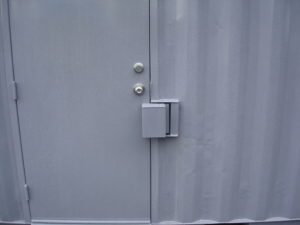4 Insider Tips to Know on Buying a Shipping Container

Buying a shipping container can be tricky if you aren’t aware of some insider tips and tricks. Doing your homework before making such a large purchase is imperative. We will let you in on some trade secrets to help aid in your decision.
1. Going Bigger Could Cost You Less
Huh? That’s doesn’t make sense. But it does in this case! Buying a larger shipping container doesn’t necessarily mean you’ll shell out more money. 10 ft containers, for example, aren’t a standard size. Usually, they’re cut down from a 20 ft box, then repainted. This could cost you more due to the additional extra steel work and repainting involved.
2. Things to Know Before Scheduling Delivery
Keep these things in mind before booking:
- Make sure there are no overhead obstructions such as cables or trees.
- Make sure there is enough room for the truck to get in there. Trucks making container deliveries usually measure about 60 ft long.
- Is the area firm? You don’t want to place a container on wet grass or mud, as it can sink, and the truck could too.
- Are there any site access restrictions, such as parked cars or fire hydrants?
- Will the container have to be lifted over obstacles such as hedges or walls?
3. Ensuring a Longer Lifespan for Your Container
Structural damage from corrosion is a killer for storage containers. When buying a used container in particular, you will have to watch out for this. The best way to combat rust is to paint it as needed. Use the thickest paint you can get and apply it regularly to keep corrosion at bay.
Before you even buy a used container, always check for signs of rust. Small, localized patches here and there are unavoidable at that price point, but just make sure it’s only affecting the surface and doesn’t go all the way through. Be wary of any flakes of rust that are peeling from the unit’s surface.
4. Inspect Floor Condition
When buying used, always inspect the condition of the floor, which will help you get a better idea of the container’s overall condition. The steel cross members should be sturdy enough so they can be lifted by a forklift with no damage.
Make sure the wood floor doesn’t lift, isn’t soft and isn’t warped from water exposure. If you feel a spongy floor when walking across it, the cross members are probably rotting or the plywood has failed in some way. If you notice an uneven floor, this is another sign the plywood has suffered damaged by moisture and has started to bow.
Contact DRY BOX
To learn more insider tips about storage containers, or to get free quotes on the container of your choice, contact us at 866-549-9823.









